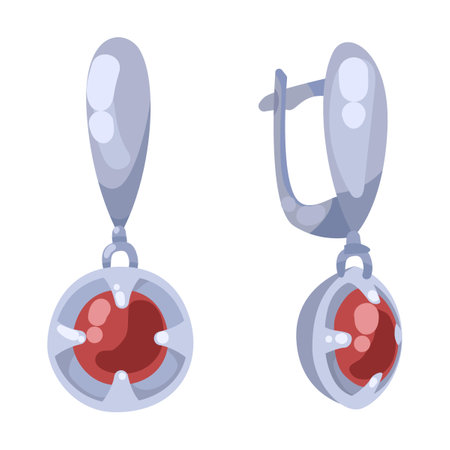1. Introduction to Meniscus Injuries in the UK
Meniscus injuries represent a significant concern within the British population, affecting individuals across a wide range of ages and activity levels. In the UK, these injuries are commonly encountered not only among athletes and sports enthusiasts but also within the general public due to everyday activities and occupational demands. The meniscus, a C-shaped cartilage found in the knee joint, is essential for cushioning, stability, and load distribution. The prevalence of meniscus injuries in Britain is influenced by several lifestyle factors, including the popularity of sports such as football and rugby, as well as recreational running and hiking which are deeply woven into British culture. Additionally, age-related degeneration plays a prominent role, particularly among older adults who may experience wear-and-tear injuries through routine movement or minor trauma.
Common risk factors for meniscus injury in the UK include sudden twisting movements, repetitive kneeling or squatting (as seen in certain trades and gardening), obesity, and previous knee injuries. These injuries can lead to persistent pain, swelling, reduced mobility, and an increased risk of developing osteoarthritis if not managed appropriately. The impact extends beyond physical symptoms; it often affects an individuals ability to work, maintain independence, and engage in social or community activities so highly valued within British society. Recognising the specific causes and challenges associated with meniscus injuries in Britain is crucial for tailoring evidence-based recovery approaches that are relevant to local needs and lifestyles.
2. Principles of Evidence-Based Practice in British Physiotherapy
Evidence-based practice (EBP) is a cornerstone of modern healthcare in the United Kingdom, particularly within physiotherapy settings. This approach integrates the best available clinical evidence, patient values, and professional expertise to guide decision-making and optimise patient outcomes. Within the context of meniscus injury recovery, EBP ensures that interventions are both safe and effective, tailored to each individuals needs.
Understanding Evidence-Based Practice in the UK
In the UK, evidence-based practice is not just a theoretical concept—it is embedded in national health policy and clinical guidelines. The National Institute for Health and Care Excellence (NICE) provides comprehensive guidance for clinicians managing musculoskeletal conditions, including meniscus injuries. NICE recommendations are informed by high-quality research and expert consensus, ensuring that patients receive consistent and effective care across the NHS and private sector.
The Role of Physiotherapists in Meniscus Injury Recovery
Physiotherapists play a pivotal role in translating evidence into everyday practice. Their responsibilities include:
| Role | Description |
|---|---|
| Assessment | Identifying the severity and type of meniscus injury through clinical examination and collaboration with other healthcare professionals. |
| Treatment Planning | Developing personalised rehabilitation plans based on current evidence and NICE guidelines. |
| Implementation | Applying manual therapy, exercise prescription, and education to support recovery. |
| Outcome Monitoring | Regularly evaluating progress and adapting interventions as needed. |
| Patient Education | Empowering individuals with knowledge about their condition, recovery expectations, and self-management strategies. |
NICE Guidelines: A Foundation for Best Practice
NICE guidelines emphasise conservative management as a first-line approach for most meniscal injuries unless there are clear indications for surgery. Physiotherapists use these guidelines to inform treatment choices, prioritising non-invasive methods such as targeted exercise programmes and functional rehabilitation. This patient-centred philosophy helps individuals regain mobility, reduce pain, and return to daily activities or sport at their own pace.
By adhering to evidence-based principles outlined by NICE and embracing a collaborative approach, British physiotherapists provide safe, effective, and compassionate care—guiding each person gently through their journey of meniscus injury recovery.

3. Conservative Management: Rehabilitation and Support
In the United Kingdom, conservative management remains a cornerstone of evidence-based meniscus injury recovery, particularly for non-complex tears or in individuals where surgery may not be immediately indicated. Under the leadership of physiotherapists, rehabilitation focuses on restoring knee function through structured exercise protocols, patient education, and holistic support that aligns with the values of the NHS.
Physiotherapy-Led Rehabilitation
Physiotherapists play a central role in guiding patients through tailored rehabilitation programmes. These typically begin with gentle range-of-motion exercises, progressing to strength training for key muscle groups such as the quadriceps and hamstrings. Emphasis is placed on gradual progression to weight-bearing activities, balance retraining, and functional movements relevant to daily life or sports participation. Physiotherapists routinely update and adapt these protocols based on individual progress, ensuring that each patient’s journey is both safe and effective.
Rest and Pain Management
Appropriate rest is crucial during the initial phase of recovery. The British approach encourages avoiding activities that exacerbate pain while promoting gentle movement to prevent joint stiffness. NHS guidelines recommend judicious use of over-the-counter analgesics or anti-inflammatories when necessary, always under professional supervision. Cold therapy and elevation are also commonly advised to manage swelling and discomfort.
Patient Education and Support
A hallmark of British practice is comprehensive patient education. Physiotherapists invest time in explaining the nature of meniscus injuries, expected timelines for recovery, and signs that warrant further medical attention. Empowering patients with knowledge not only improves adherence to home exercise programmes but also fosters confidence and autonomy throughout the rehabilitation process.
Patient-Centred Care in the NHS
The NHS ethos prioritises patient-centred care—recognising each individual’s unique needs, preferences, and goals. Open communication between healthcare professionals and patients is encouraged at every step. Emotional support is integral, with physiotherapists offering reassurance and motivation during setbacks. Collaborative decision-making ensures that management plans are realistic and sustainable within the context of each patient’s lifestyle, whether returning to work, sport, or day-to-day activities.
Surgical Interventions and Post-operative Care
Within British orthopaedic practice, surgical interventions for meniscus injuries are considered when conservative management has not yielded satisfactory results or when the injury is complex—such as root tears, bucket-handle tears, or irreparable damage causing persistent mechanical symptoms. The decision to proceed with surgery is always grounded in robust clinical guidelines and multidisciplinary team discussions, ensuring patient safety and the best possible outcomes.
Indications for Surgery in British Practice
| Indication | Description |
|---|---|
| Failure of Conservative Treatment | Persistent pain or dysfunction after 6–12 weeks of physiotherapy and non-surgical interventions |
| Mechanical Symptoms | Locking, catching, or giving way of the knee joint that impairs daily activities |
| Complex or Large Tears | Root tears, displaced bucket-handle tears, or tears extending into the vascular zone |
| Associated Injuries | Concurrent ligamentous injuries requiring surgical repair |
Types of Surgical Procedures Performed in the UK
The two principal procedures include arthroscopic partial meniscectomy and meniscal repair. Meniscectomy is more common for degenerative tears in older adults, while repair is prioritised for younger patients and those with acute traumatic tears within the vascular region. Meniscal transplantation is rarely performed but may be considered in highly selected cases.
| Procedure Type | Typical Patient Profile | Main Goals |
|---|---|---|
| Arthroscopic Partial Meniscectomy | Older adults, degenerative tears, non-repairable fragments | Pain relief, restore function by removing damaged tissue |
| Meniscal Repair (all-inside, inside-out, outside-in techniques) | Younger patients, traumatic tears within vascular zone (red-red or red-white) | Tissue preservation, maintain knee stability and long-term joint health |
| Meniscal Transplantation (rare) | Select young patients post-meniscectomy with ongoing symptoms and suitable anatomy | Restore shock absorption and delay osteoarthritis progression |
Structured Post-operative Recovery Pathways in UK Hospitals
The NHS places great emphasis on evidence-based post-operative care. After surgery, patients follow a structured pathway tailored to their procedure type and personal needs. This typically involves:
- Pain Management: Multi-modal analgesia protocols to minimise opioid use and encourage early mobilisation.
- Physiotherapy: Early referral to community physiotherapists for progressive weight-bearing and range-of-motion exercises.
- Follow-up Clinics: Scheduled at 2–6 weeks post-op to monitor wound healing and functional progress.
- Return to Activity: Gradual return to sport or work guided by functional milestones rather than strict timelines.
- Psycho-social Support: Access to counselling or peer support if psychological distress from injury or recovery delays is present.
NHS Aftercare: A Patient-Centred Approach
NHS practice underscores compassionate communication, shared decision-making, and holistic support for individuals recovering from meniscus surgery. Multidisciplinary teams—including surgeons, nurses, physiotherapists, occupational therapists, and case managers—work collaboratively to ensure each person feels supported throughout their journey back to independence and activity. This comprehensive approach reflects both national standards and the warm ethos found across UK healthcare settings.
5. The Role of Multidisciplinary Teams in Recovery
In the United Kingdom, a hallmark of effective meniscus injury recovery lies in the collaborative approach adopted within the NHS and private healthcare settings. Multidisciplinary teams (MDTs) are central to this process, ensuring that patients receive comprehensive, evidence-based care tailored to their unique needs. These teams bring together the expertise of physiotherapists, orthopaedic consultants, general practitioners (GPs), and a host of allied health professionals who work in concert to optimise both immediate recovery and long-term wellbeing.
The Value of Integrated Care
The British practice recognises that no single professional holds all the answers when it comes to complex musculoskeletal injuries like meniscus tears. Physiotherapists lead on rehabilitation and exercise prescription, using up-to-date protocols grounded in research. Orthopaedic consultants provide surgical assessment and intervention when necessary, while GPs oversee holistic patient care, manage comorbidities, and coordinate referrals across services. Additional input may come from sports therapists, occupational therapists, or pain specialists as required.
Communication and Continuity
At the heart of this multidisciplinary approach is clear communication. Regular case discussions—whether face-to-face or via secure digital platforms—help ensure everyone involved is aligned on treatment goals and progress. This seamless coordination reduces the risk of fragmented care and enables swift adjustments if a patient’s needs change during their recovery journey.
Patient-Centred Support
Importantly, MDTs in British practice place the patient at the centre of decision-making. By involving individuals in goal setting and discussing options collaboratively, these teams foster a sense of empowerment and shared responsibility for recovery. Patients benefit not only from targeted clinical interventions but also from emotional support and practical advice tailored to daily life in the UK—from returning to work safely to resuming favourite activities like walking in the Lake District or playing local football.
This collective expertise ensures that each person’s path to healing is as smooth and supported as possible, reflecting the core values of British healthcare: compassion, evidence-based practice, and respect for individual needs.
6. Community Resources and Long-Term Management
Successfully recovering from a meniscus injury extends far beyond the initial clinical interventions and physiotherapy sessions. In the UK, there is a strong emphasis on holistic, community-based approaches that support ongoing management and empower individuals to maintain their knee health in the long term.
NHS Support and Guidance
The NHS offers a comprehensive suite of resources for people recovering from meniscal injuries. These include follow-up appointments with orthopaedic teams, access to physiotherapists, and patient education programmes. Many NHS trusts provide digital resources, such as online rehabilitation guides and exercise videos tailored for knee recovery, ensuring patients can continue their prescribed exercises safely at home.
Community-Based Rehabilitation Services
For those needing more sustained support, local community rehabilitation services can be invaluable. These often operate through community hospitals or GP surgeries and may include specialist physiotherapists, occupational therapists, and group exercise classes designed specifically for joint health. Such services help individuals rebuild confidence in daily activities, reduce isolation, and encourage adherence to evidence-based exercise regimes.
Local Charities and Voluntary Organisations
Charitable organisations like Arthritis Action or Versus Arthritis also play an important role in the British context. They offer peer support groups, self-management workshops, helplines, and educational materials tailored for people with ongoing joint issues. These resources not only provide practical advice but also foster a sense of belonging and emotional resilience during recovery.
Prevention of Further Injury
Long-term management is about more than just healing—it’s about prevention too. Local leisure centres often run “Move More” initiatives, gentle exercise classes (such as Pilates or aquatic therapy), and balance training sessions aimed at reducing the risk of re-injury. GPs and physiotherapists can signpost patients to these services, helping them stay active within safe limits while maintaining social connections.
Tapping into these diverse community resources ensures that patients are not alone on their journey. The British approach recognises that sustainable recovery is best achieved through a blend of professional guidance, peer encouragement, and accessible local opportunities—laying the groundwork for both physical resilience and lasting wellbeing.
7. Future Directions and Ongoing Research in the UK
As meniscus injury recovery continues to evolve within British healthcare, ongoing research and future directions are shaping a landscape that promises more effective, personalised care. Current research initiatives in the UK focus on refining both surgical and non-surgical interventions. Clinical trials are exploring the long-term outcomes of meniscus-preserving techniques, such as all-inside repair methods and biological augmentation, aiming to enhance healing while minimising complications. Simultaneously, there is increasing interest in advanced imaging technologies for earlier and more precise diagnosis, which is critical for tailoring rehabilitation protocols to individual patients.
Despite these advances, several gaps remain in our understanding of optimal meniscus injury management. There is a particular need for large-scale studies that compare the effectiveness of traditional versus innovative rehabilitation strategies within diverse patient populations. Further investigation into the role of biologics—such as platelet-rich plasma and stem cell therapies—is also underway, with early results suggesting potential but not yet definitive benefits.
Looking ahead, the integration of digital health tools, including remote monitoring apps and tele-rehabilitation platforms, is expected to play a significant role in supporting recovery journeys across the UK’s NHS and private sectors. These tools offer opportunities to deliver evidence-based physiotherapy remotely, track patient progress in real time, and provide timely support that aligns with British standards of accessible care.
The future of meniscus injury recovery in Britain will likely be shaped by collaborative efforts among orthopaedic specialists, physiotherapists, researchers, and patients themselves. By fostering partnerships across disciplines and involving patients in shared decision-making, British practice can continue to advance towards holistic, person-centred care rooted in robust scientific evidence. As research progresses, it is hoped that emerging findings will inform updated clinical guidelines—ensuring that every individual recovering from a meniscus injury receives compassionate support paired with the most effective interventions available.

